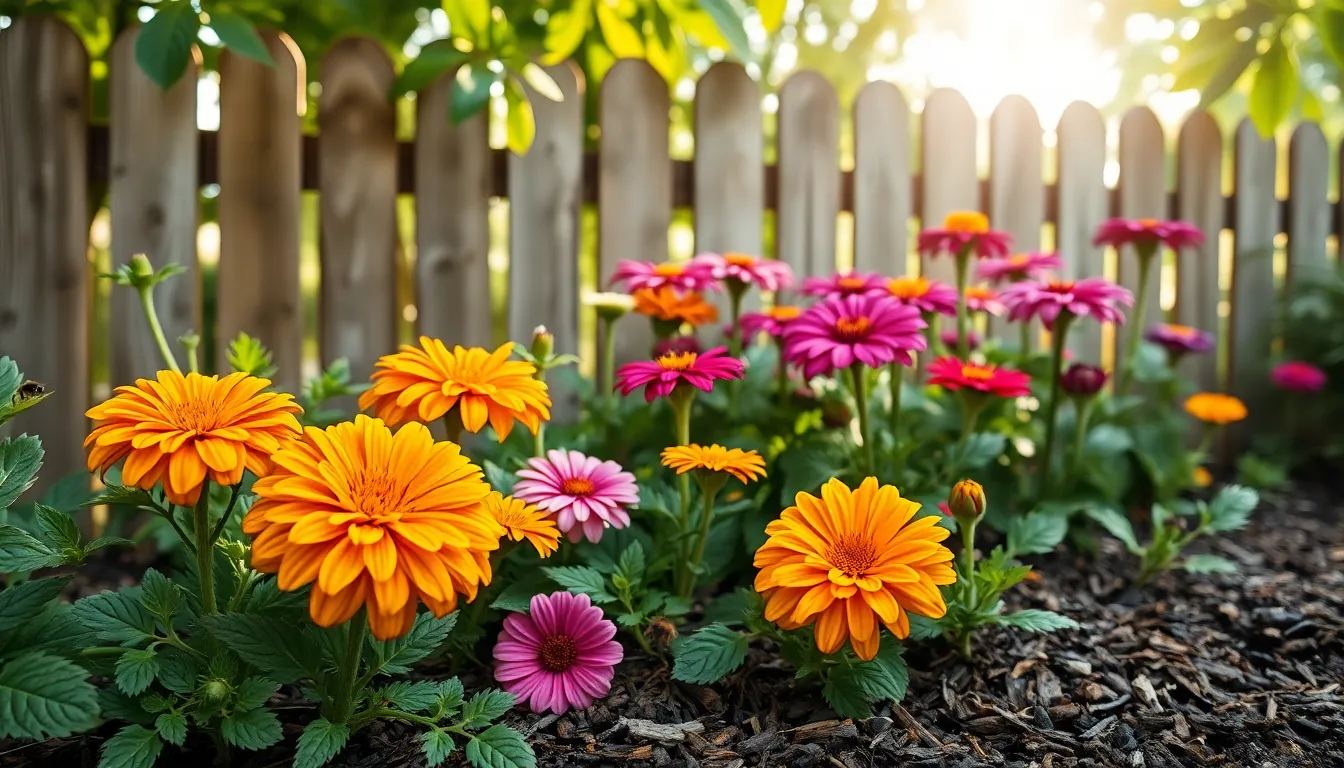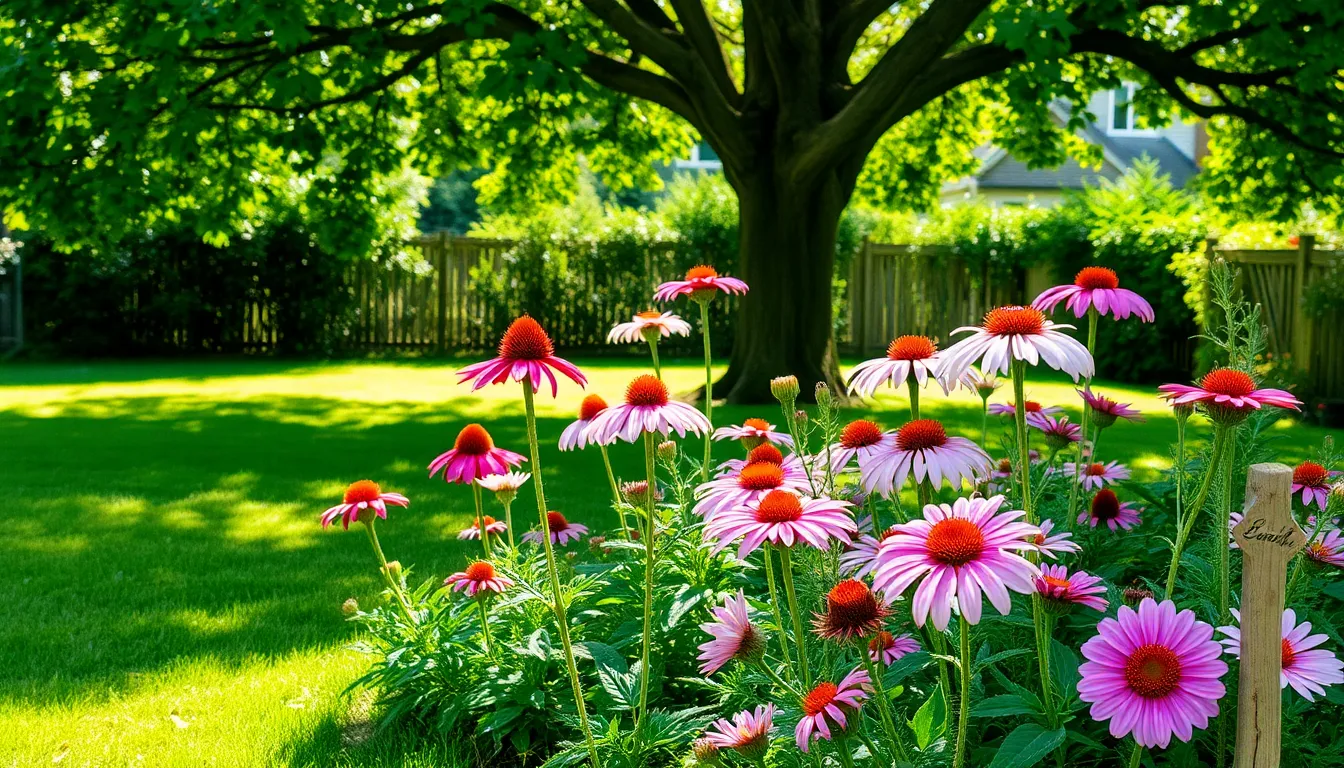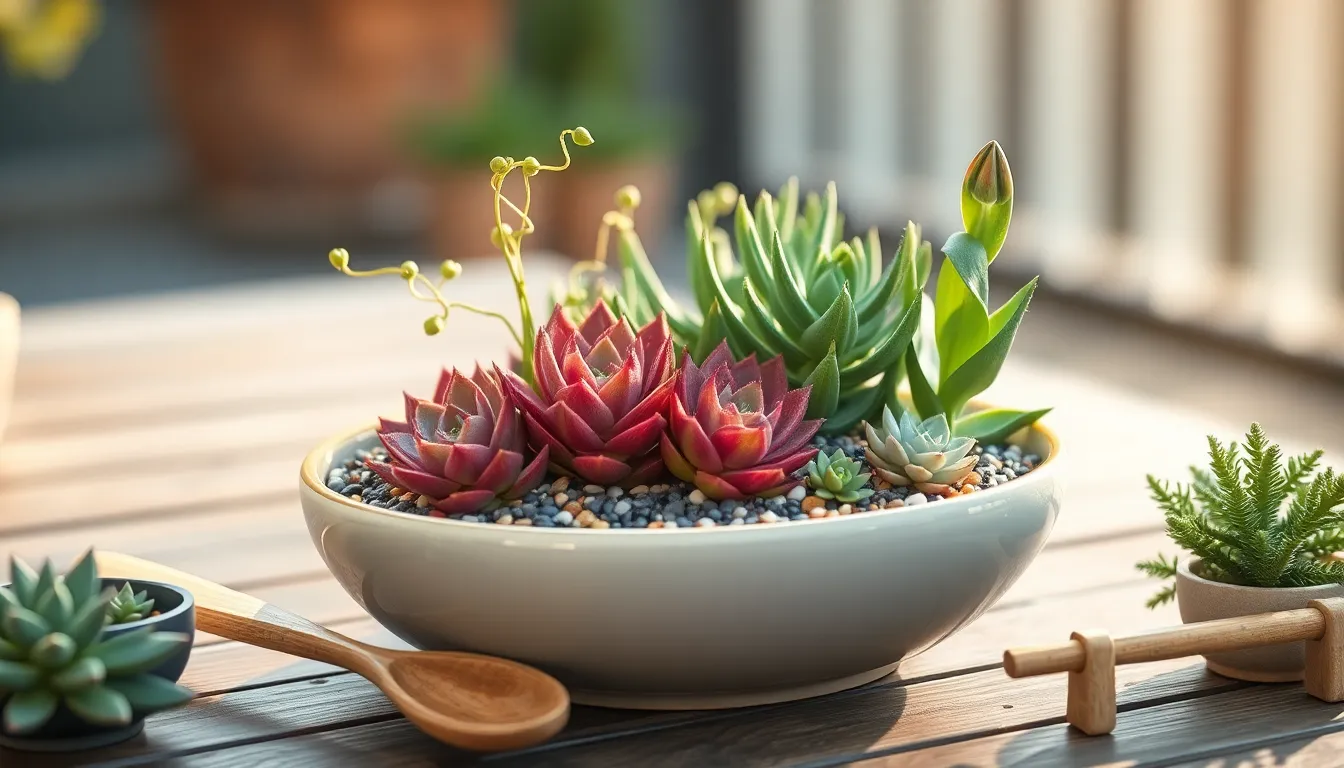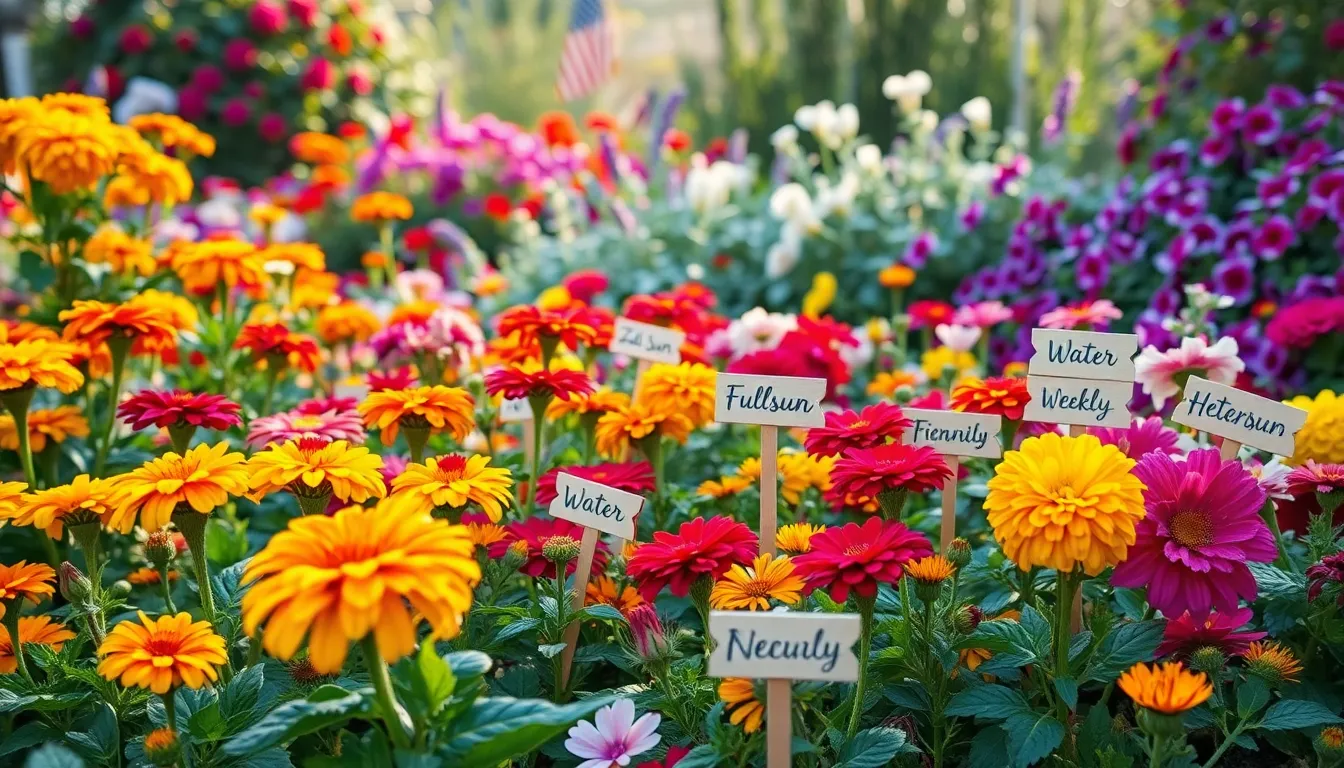A garden brimming with vibrant blooms can transform any outdoor space into a personal paradise, offering both visual delight and a sanctuary for the soul. Whether you’re just planting your first seed or have years of experience with your hands in the soil, selecting flowers that are easy to cultivate can make gardening a rewarding endeavor. In this article, we’ll delve into five delightful flowers that promise to thrive with minimal fuss, ensuring your garden stays lush and lively.
For newcomers, these flowers provide the perfect starting point, requiring little more than basic care and a touch of enthusiasm. Seasoned gardeners, on the other hand, will appreciate the dependability and charm these blooms bring, enhancing the overall tapestry of their garden. You’ll learn not only which flowers to choose but also how to nurture them to their full potential, ensuring a flourishing garden with every season.
Discovering flowers that are both beautiful and easy to grow opens up opportunities for creativity and expression in your gardening journey. We’ll guide you through the essentials of each plant’s care routine, with tips to help you avoid common pitfalls and maximize your success. By the end of this article, you’ll feel inspired and equipped to make your garden a showcase of effortless beauty, with flowers that stand the test of time and the changing of seasons.
Choosing Low-Maintenance Blooms
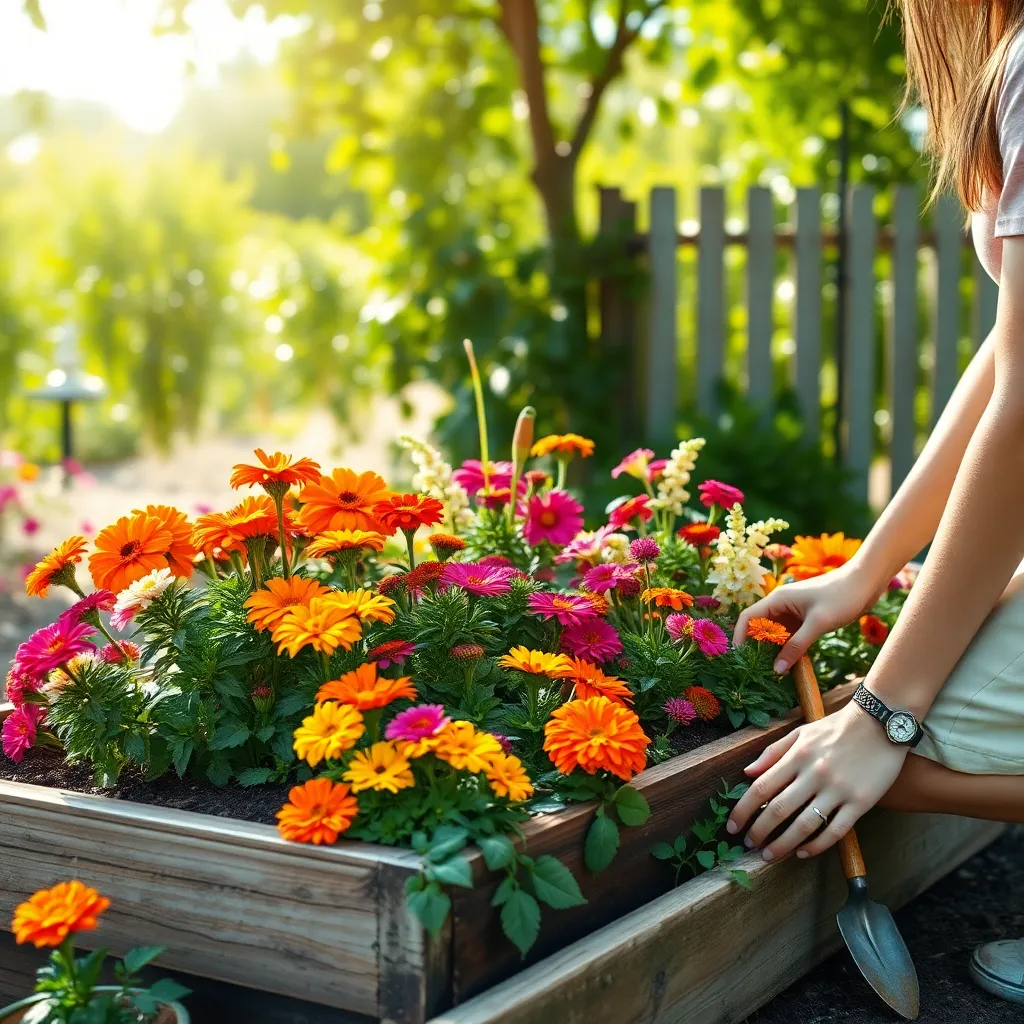
When choosing low-maintenance blooms for your garden, consider plants that thrive with minimal intervention. Perennials like coneflowers and daylilies are excellent choices since they return year after year with little effort on your part.
Ensure that your soil is well-draining, as most low-maintenance flowers prefer not to sit in waterlogged conditions. Adding organic matter, such as compost, can improve soil structure and provide nutrients over time.
For a low-maintenance garden, it’s crucial to select flowers that are drought-resistant. Lavender and yarrow are both hardy choices that flourish even in dry spells, making them perfect for busy gardeners who might forget a watering or two.
Plant your flowers in a location where they will receive the appropriate amount of sunlight, typically 6-8 hours for most low-maintenance varieties. If space allows, group plants with similar water and light requirements together to simplify care.
Mulching is an effective technique to reduce maintenance needs by suppressing weeds and conserving soil moisture. Apply a 2-3 inch layer of organic mulch, such as bark or wood chips, around your blooms to keep them thriving with less effort.
Top Picks for Effortless Growth
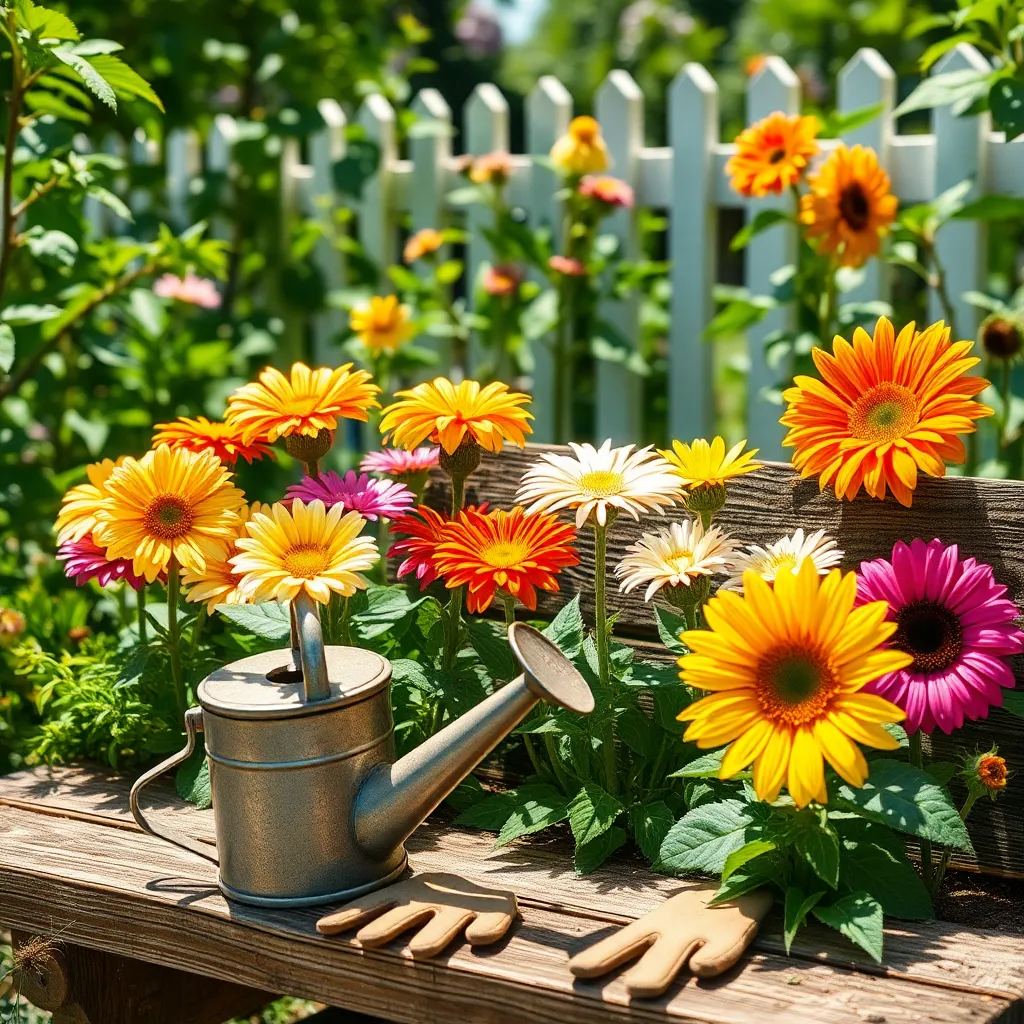
To start with, Sunflowers are a fantastic choice for effortless growth in your garden. These sunny blooms thrive in full sun and require well-draining soil, making them perfect for beginners seeking vibrant results.
Another excellent option is Marigolds, which are known for their pest-repelling properties. Plant them in nutrient-rich soil and ensure they receive ample sunlight for the best blooms and garden health benefits.
Consider Zinnias for a splash of color with minimal fuss. They thrive in well-drained soil and prefer a spot that gets at least six hours of sunlight per day, making them a low-maintenance option for any garden.
For those seeking a classic touch, Pansies are an ideal choice due to their adaptability and charm. They perform best in cooler climates and require regular watering to keep their soil moist but not waterlogged.
Lastly, Cosmos are perfect for gardeners who appreciate a wildflower aesthetic. These drought-tolerant beauties flourish in poor to average soil and need minimal watering once established, offering a carefree addition to your garden.
Sunlight Needs for Easy Flowers
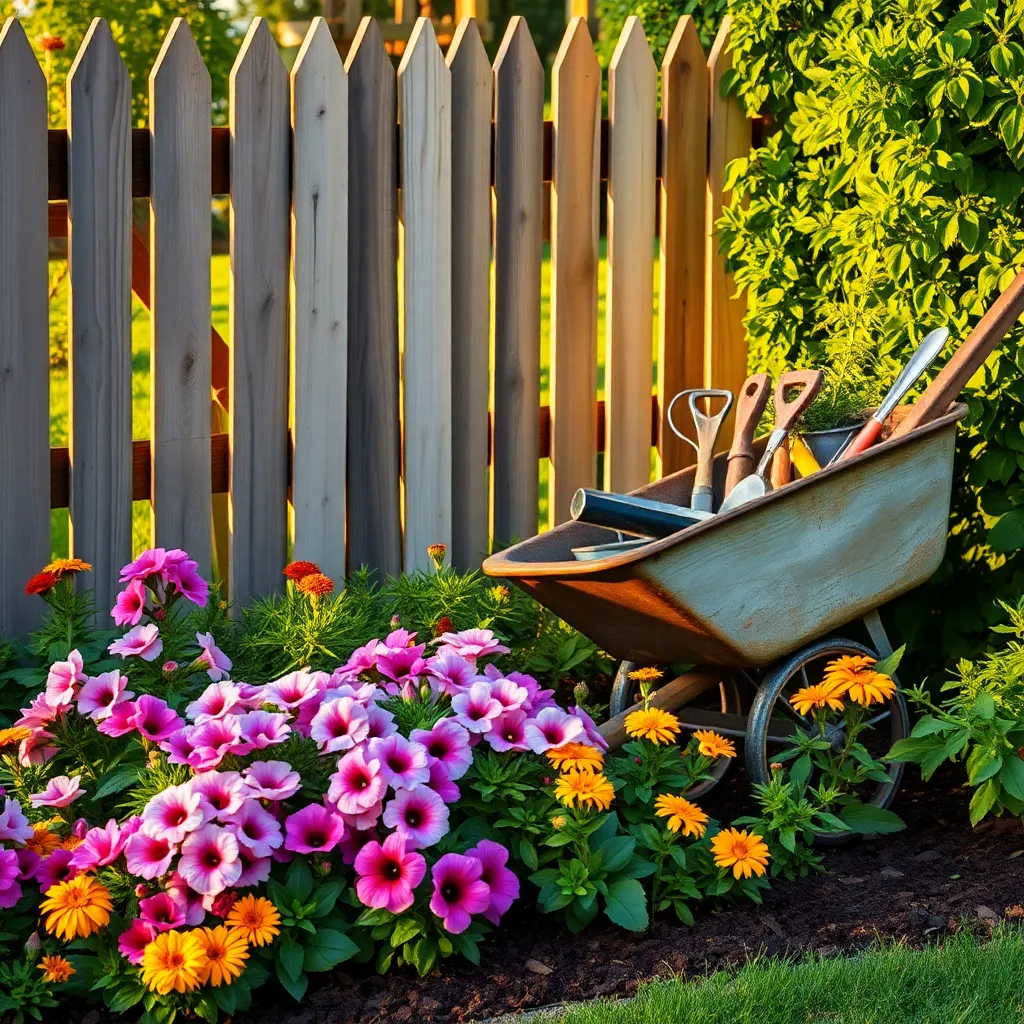
Understanding the sunlight needs of your flowers is crucial for thriving blooms. Most easy-to-grow flowers prefer full sun, which means at least six hours of direct sunlight each day. Marigolds are a perfect example of a sun-loving flower, thriving in bright, sunny spots. To ensure they flourish, plant them in well-draining soil and water them moderately when the top inch of soil feels dry.
For gardeners with partial sun conditions, consider growing impatiens, which thrive with filtered sunlight or morning sun. They require consistently moist soil, so regular watering is essential, especially during hot spells. Use a mulch layer to retain moisture and keep the roots cool, enhancing their vibrant blooms.
Shaded areas can still host beautiful flowers like begonias, which are well-suited for indirect sunlight or dappled shade. They prefer rich, well-draining soil and should be watered when the surface feels dry but avoid soggy conditions. Fertilize them monthly with a balanced liquid fertilizer to support their growth and flowering.
Incorporate a mix of sun and shade plants in your garden to ensure a continuous display of color. To optimize their health, group plants with similar light requirements together. This strategy not only simplifies care but also enhances the overall aesthetic of your garden. Implement these tips, and your garden will soon be a blooming oasis!
Simple Watering Tips for Success
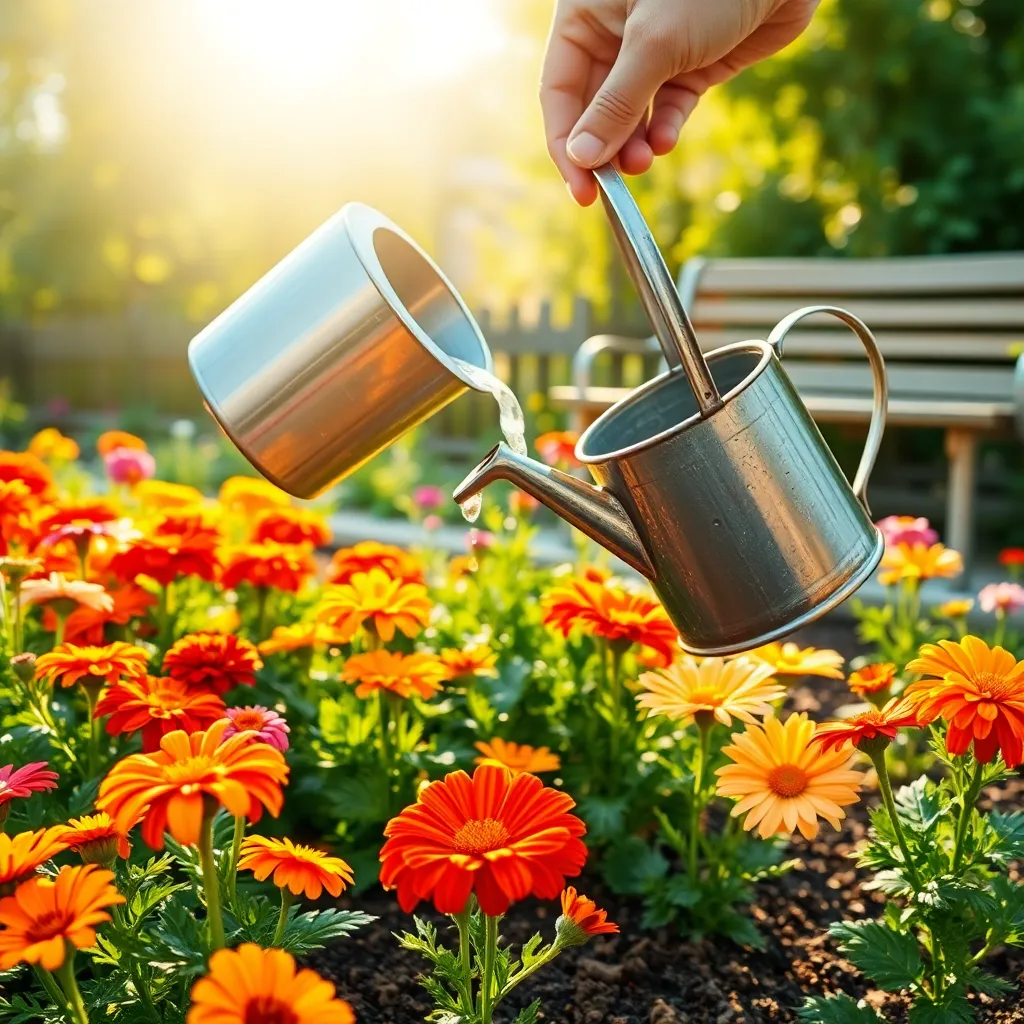
Understanding when and how much to water your flowers is crucial for a thriving garden. The best time to water is early in the morning or late in the afternoon, allowing the soil to absorb moisture without the intense midday sun evaporating it too quickly.
Different flowers have varying water needs, so it’s essential to know your plants. For example, marigolds prefer slightly dry soil, whereas impatiens thrive in consistently moist environments.
To ensure even watering, consider using a soaker hose or drip irrigation system. These tools help distribute water directly to the root zone, minimizing evaporation and maximizing efficiency.
For those with container gardens, be mindful that potted plants may require more frequent watering. Containers dry out faster than ground soil, especially in hot weather, so check them daily by feeling the soil about an inch below the surface.
Remember to adjust your watering schedule with the seasons; plants typically need less water in cooler months. By paying attention to your garden’s specific needs, you ensure that your flowers will not only survive but flourish throughout the year.
Maximize Bloom with Minimal Care
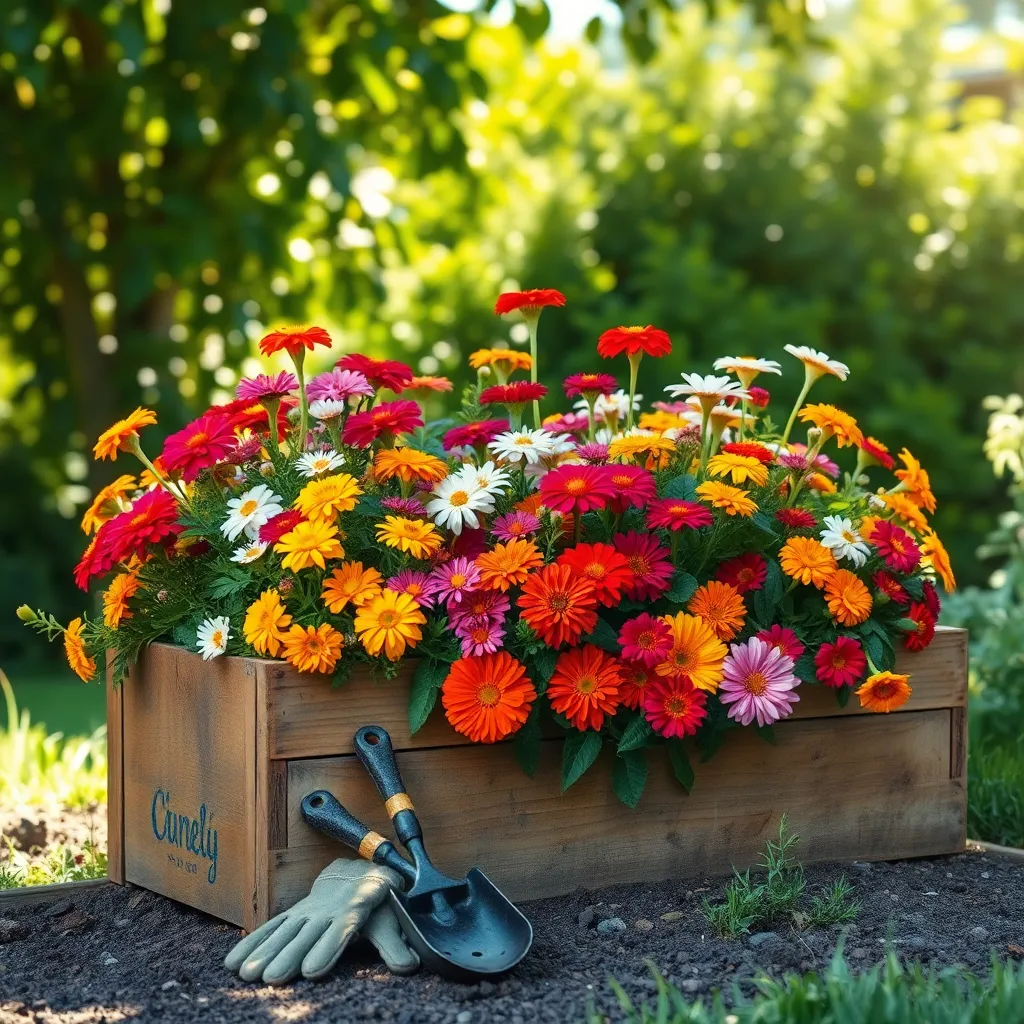
To maximize blooms with minimal care, choose flowers that thrive on neglect rather than constant attention. Perennials like Daylilies and Black-eyed Susans are perfect for this, as they return each year with little effort from you.
Plant these flowers in well-draining soil, as they do best in conditions that prevent waterlogging. Avoid heavy clay soils unless they are amended with organic matter to improve drainage and texture.
For optimal blooming, ensure these flowers receive plenty of sunlight—at least six hours of direct sunlight daily. If your garden has partial shade, consider planting Columbines or Bleeding Hearts, which can thrive in less light.
Watering these hardy blooms is simple: aim for deep, infrequent watering sessions rather than daily sprinkles. This encourages a strong root system and reduces the risk of diseases associated with consistently wet foliage.
For those looking to add a touch of color without much hassle, consider using mulch around your plants. Mulch helps retain soil moisture, suppress weeds, and gradually breaks down to enrich the soil, all of which contribute to healthier and more robust blooms.
Lastly, a light application of a balanced fertilizer in early spring can give your flowers the boost they need for a vibrant bloom season. Opt for organic options to minimize environmental impact and promote a healthier garden ecosystem.
Conclusion: Growing Success with These Plants
In exploring the delightful world of gardening, we’ve uncovered five easy-to-grow flowers that can beautifully parallel the nurturing of healthy relationships: the resilient marigold teaches us the power of adaptability, while the ever-blooming zinnia reminds us of the joy in consistent effort. The graceful lavender promotes the importance of calm communication, the vibrant sunflower encourages us to thrive in positivity, and the enduring geranium highlights the value of steadfast support.
To cultivate these qualities in your relationships, take a moment today to reflect on which flower resonates most with your current situation and implement its lesson. Whether it’s practicing adaptability or fostering positivity, small actions can lead to profound growth.
Don’t let these insights fade; bookmark this article to revisit these lessons and continue nurturing your relationships. Your journey to cultivating a flourishing garden of connections is just beginning. By tending to these relationship principles, you’re planting the seeds for lasting success and joy in your interactions with others. Embrace this opportunity to grow and thrive, knowing that each step you take brings you closer to a garden full of love and understanding.

